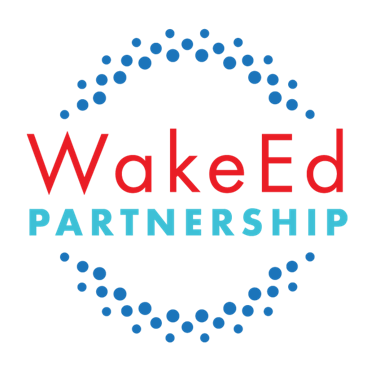Highlights of a conversation with Nancy Merritt and Tim Lavallee of WakeEd Partnership (WakeEd), a nonprofit organization in Raleigh, North Carolina that engages, informs, and mobilizes the business community and community-at-large in collaboration with the Wake County Public School System (WCPSS) to provide every student with excellent educational opportunities, highly effective teachers, and strong leaders.
WakeEd identified a gap in their technology infrastructure that was hindering their ability to effectively achieve their vision for social impact. In order to build technology capacity, Common Impact connected WakeEd Partnership to a team of technologists at Fidelity Investments during Tech Impact Week, a wide-scale, skills-based flash consulting event. During the day, the volunteers worked with WakeEd’s leadership team to develop a requirements framework for a database that would ultimately enable the organization to track the impact of their programs within the Wake County Public School System and identify critical gaps in program delivery.
Why was solving this technology challenge a high priority for your organization?
“The Wake County Public School System is North Carolina’s largest school district with 160,000 students. Although WakeEd is a small organization, we strive to one day make an impact on all teachers and students. We would ultimately love to be able to measure where our programs have been, where they are now, and where they would like to be, but given our current capacity, we must be really efficient with the way we track data and measure impact.
Everyone in our organization keeps track of their own data in various ways and there is a lot of extra communication needed to access the right data because we don’t have a centralized location where we can track, organize, and access it. Given these pain points, our Fidelity volunteers recommended a way for us to set up our database, created the architecture, and provided actionable next steps for us to hand requirements off to a database developer. A central location will help us streamline our processes and maximize staff capacity to focus on our program work.”
How will this project ultimately help your organization better achieve its mission?
“When it comes down to program evaluation, we know what is going on within our organization – what teachers and schools have participated and how many students we’ve reached. However, our ultimate goal is to leverage a central database to track and manage our data more broadly to get a holistic view of an individual, business or organization and capture the stories of those that are advocates for our organization. We want to be able to point to this data to make informed decisions about the future of our organization and our programs.”
What is your favorite “a-ha” moment from the project?
“We had an ultimate vision of what we wanted as an outcome of this project, but we are not data scientists by trade! At the end of Tech Impact Day, we were sitting with our team as the volunteers were drawing out the structure of the database and were impressed with how they could take all our notes and turn them into something so concrete. We had to take a step back and say wow – this is really going to be helpful for us.
Being a part of Tech Impact Day also helped us better understand the backend of our own programs. One of our core business engagement programs, known as Link, connects schools and teachers with businesses and organizations who can help them achieve their goals on specific project opportunities. Our participation in the day of service allowed us to think through our work in a new way. Now that we have been on the other side of the aisle, we have a better understanding of the questions schools and teachers should be prepared to ask and can better train our subject matter experts on what a reasonable project scope is during a half-day engagement.”



